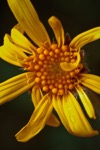Notice (8): Undefined index: geoplugin_countryCode [APP/Controller/AppController.php, line 94]Code Context$Country_code = '';if($ip_data && $ip_data['geoplugin_countryCode'] != null) {$Country_code = $ip_data['geoplugin_countryCode'];$client = null $forward = null $remote = '216.73.216.24' $ip = '216.73.216.24' $ch = unknown $ip_data_in = '{ "geoplugin_status":429, "geoplugin_message": "Blacklisted due to sending too many requests to geoplugin.net. Consider whitelisting your IP or domain", "geoplugin_url": "https://www.geoplugin.com/premium/" } ' $ip_data = [ 'geoplugin_status' => '429', 'geoplugin_message' => 'Blacklisted due to sending too many requests to geoplugin.net. Consider whitelisting your IP or domain', 'geoplugin_url' => 'https://www.geoplugin.com/premium/' ] $Country_code = ''App\Controller\AppController::initialize() - APP/Controller/AppController.php, line 94 App\Controller\ProductsController::initialize() - APP/Controller/ProductsController.php, line 31 Cake\Controller\Controller::__construct() - CORE/src/Controller/Controller.php, line 273 ReflectionClass::newInstance() - [internal], line ?? Cake\Http\ControllerFactory::create() - CORE/src/Http/ControllerFactory.php, line 47 Cake\Http\ActionDispatcher::dispatch() - CORE/src/Http/ActionDispatcher.php, line 91 Cake\Http\BaseApplication::__invoke() - CORE/src/Http/BaseApplication.php, line 235 Cake\Http\Runner::__invoke() - CORE/src/Http/Runner.php, line 65 Cake\Http\Runner::__invoke() - CORE/src/Http/Runner.php, line 65 Cake\Http\Middleware\CsrfProtectionMiddleware::__invoke() - CORE/src/Http/Middleware/CsrfProtectionMiddleware.php, line 104 Cake\Http\Runner::__invoke() - CORE/src/Http/Runner.php, line 65 Cake\Http\Runner::run() - CORE/src/Http/Runner.php, line 51 Cake\Routing\Middleware\RoutingMiddleware::__invoke() - CORE/src/Routing/Middleware/RoutingMiddleware.php, line 168 Cake\Http\Runner::__invoke() - CORE/src/Http/Runner.php, line 65 Cake\Routing\Middleware\AssetMiddleware::__invoke() - CORE/src/Routing/Middleware/AssetMiddleware.php, line 88 Cake\Http\Runner::__invoke() - CORE/src/Http/Runner.php, line 65 Cake\Error\Middleware\ErrorHandlerMiddleware::__invoke() - CORE/src/Error/Middleware/ErrorHandlerMiddleware.php, line 96
| Scientific: | Arnica montana |
|---|---|
| Other: | Arnica; Leopard's Bane |
| Family: | Asteraceae |
Arnica grows wild in the mountains of Europe and has a long tradition in western herbalism. The flower extract is used topically as a vulnerary, analgesic and anti-inflammatory, to decrease musculoskeletal pain.
Arnica is the quintessential herb for blunt trauma, as well as muscle strain resulting in inflammation and bruising. Research supports its topical use for arthritic joint pain and to reduce muscle pain from exercise.
Caution: Arnica contains toxic sesquiterpene lactones (helenalin) and thus it is restricted to topical use and for closed wounds only.
Musculoskeletal (topical use)
• blunt injuries to soft tissue
• hematomas
• strains
• sprains
• tendonitis
• dislocations
• bursitis
• myalgia
• trauma to connective tissue
• closed fractures
• osteoarthritis
• rheumatoid arthritis
• post-surgical swelling
• plantar fasciitis
• carpal tunnel syndrome (CTS)
• gout
Cardiovascular
• venous insufficiency
• chilblains
Other
• insect bites
• Vulnerary
• Antiinflammatory
• Analgesic
• Antiseptic
• Antimicrobial
• Sesquiterpene Lactones (E.g. Helenalin)
• Mucilage
• Flavonoids
• Volatile Oils
Creams (5-25%): apply as needed
Oil infusion: tid
External use only.
Contraindications: Internal use; toxic and may result in severe gastroenteritis, muscle paralysis, cardiac failure and death.
Side effects: Allergic contact dermatitis; many members of the Asteraceae family contain sesquiterpene lactones that can cause skin rashes in sensitive individuals.
Long-term use: May cause skin rash in sensitive individuals.
Barnes J, Anderson LA, Phillipson JD. Herbal Medicines, 3rd ed. London: Pharmaceutical Press, 2007.
Bone K. Principles and Practice of Phytotherapy. Edinburgh: Churchill Livingstone, 2000.
Bone K. A Clinical Guide to Blending Liquid Herbs: Herbal Formulations for the Individual Patient. St Louis, MO: Churchill Livingstone, 2003.
Brinker F. The Toxicology of Botanical Medicines, 3rd ed. Sandy, Oregon: Eclectic Medical Publications, 2000.
Felter HW, Lloyd JU. King's American Dispensatory. 1898. http://www.ibiblio.org/herbmed/eclectic/kings/main.html. Accessed: August 19, 2006.
Hoffman D. Medical Herbalism. Rochester, Vermont: Healing Arts Press, 2003.
Weiss RF. Herbal Medicine. Beaconsfield, England: Beaconsfield Publishers Ltd, 1988.
Williamson EM, ed. Major Herbs of Ayurveda. Edinburgh: Churchill Livingstone, 2002
Disclaimer: This content is subject to change. The information is intended to inform and educate; it does not replace the medical evaluation, advice, diagnosis or treatment by a healthcare professional. www.nhpassist.com © 2014 NDAssist Inc. and/or its affiliates. All rights reserved.

|
Arnica
SummaryArnica grows wild in the mountains of Europe and has a long tradition in western herbalism. The flower extract is used topically as a vulnerary, analgesic and anti-inflammatory, to decrease musculoskeletal pain. IndicationsSign in requiredActionsSign in requiredConstituentsSign in requiredPosologySign in requiredSafetySign in requiredReferencesSign in required |
|---|